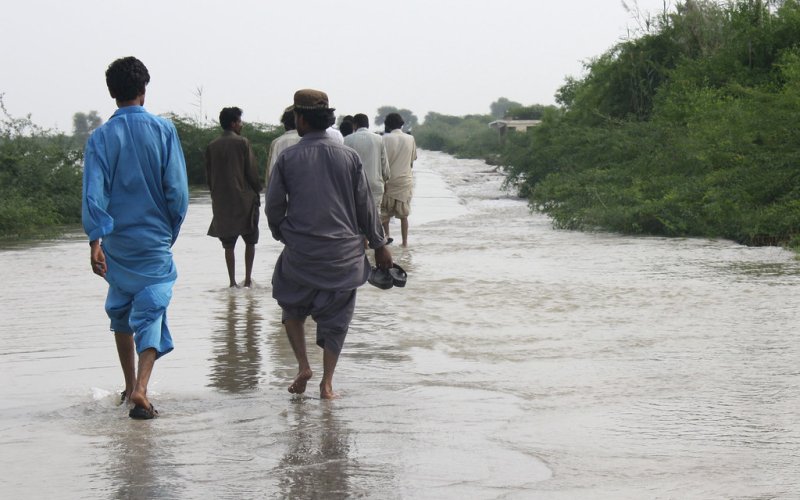Emergency Preparedness Experts Offer Insight on the Pakistan Flood Crisis

By Mike Nolan
ALBANY, N.Y. (Sept. 15, 2022) — Pakistan is in the midst of a massive humanitarian crisis after months of heavy, record-breaking rainfall submerged a third of the country and caused $10 billion in damage since mid-June.
The extreme flooding has been described as the worst Pakistan has ever seen, with experts directly connecting it to human-driven climate change, illustrating how countries with the lowest contributions to global warming are becoming increasingly vulnerable to its effects.
As of last week, the cumulative number of related deaths rose to more than 1,200, the country's National Disaster Management Authority reported. At least 33 million people have been impacted and a half million are living in temporary shelters.
UAlbany experts at the College Emergency Preparedness, Homeland Security and Cybersecurity (CEHC) have been closely following Pakistan’s response to the devastating floods and the ongoing international efforts to provide humanitarian aid.

Samantha Penta, assistant professor in CEHC’s new Department of Emergency Management and Homeland Security, researches health and medical care in crises, decision-making in preparedness and response, and humanitarian logistics. She has worked on projects examining evacuation and preparedness challenges for long-term care facilities, disaster donations behavior, and community recovery and resilience to disasters and epidemics.
Penta suggests that the flooding in Pakistan is much larger than the kinds of disruptions that government and disaster relief workers expected to occur.
“When we try to evaluate the quality of the planning that took place before a disaster event, especially when we try to do so using an ongoing response, we face a lot of challenges. Emergency managers can certainly anticipate and plan for conditions like damage to transportation networks and critical infrastructure, but even the best planning can be difficult to execute under those circumstances,” said Penta.
“Planning can also be affected by a changing risk landscape,” she added. “While global climate change is largely understood to be changing climate patterns in areas across the world, we are still learning how those changes will manifest. Identifying risks and planning for possible disasters is even more challenging when the nature of the hazards a community or country faces is evolving.”

Amber Silver, also an assistant professor in the Department of Emergency Management and Homeland Security, researches how individuals and groups make decisions before, during and after high-impact weather. More specifically, she is interested in the roles that public attention, risk perception and communication play in protective action decision making during extreme events.
Like Penta, she says that the scale of the Pakistan flooding has brought extraordinary challenges for government officials and emergency managers.
“Pakistan has made considerable strides with disaster risk reduction and preparedness planning in recent years, largely as a result of the 2005 Kashmir earthquake and the 2010 flooding. However, the scale of the current flooding is unprecedented in the country. Not even the 2010 flood — which affected over 14,000 square miles and cost upwards of $43 billion USD — comes close to the scope of this event.
“Pakistan will need considerable foreign assistance to respond to and recover from this event. The immediate concern is reducing morbidity and mortality while also reducing the possibility of secondary hazards — in this case, water-borne and zoonotic diseases represent a real concern over the next few months.”




